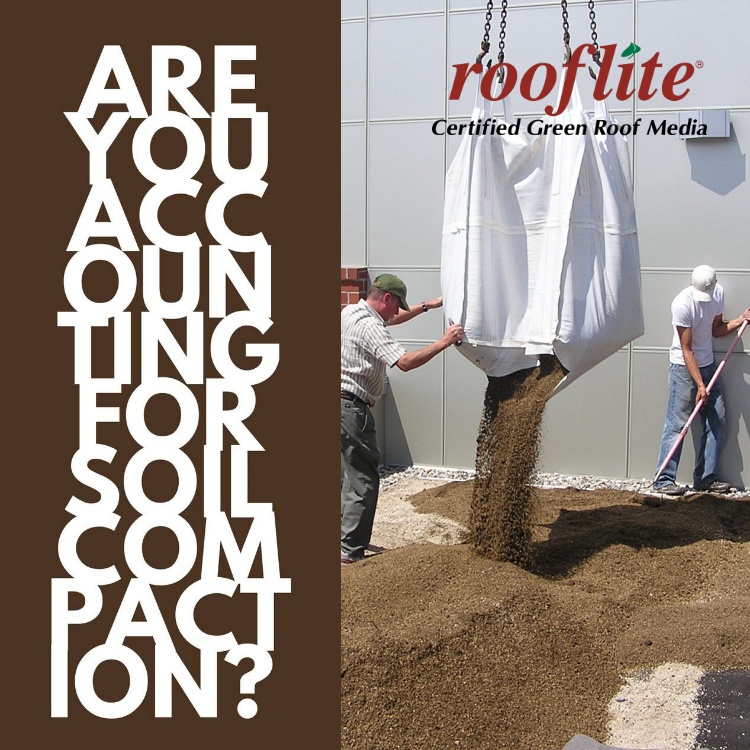When you’re designing a green roof, you probably already know that you need to get the right volume of green roof soil for your plants and design. Your design largely determines the volume you need.
But are you accounting for soil compaction when you determine how much soil you need? It’s an essential part of any green roof soil order, and we want to walk you through compaction.
Green roof soil is a blend of lightweight aggregates and organic matter components. Like any soil, green roof soil has a specific composition and moisture content. Depending on the green roof soil product, more or less air will be retained in the loose product. The amount of air in the soil will change during transportation, installation, and when exposed to the elements. This change in the air or space between soil particles is compaction.
Compaction happens to all soil, and it will continue to occur to green roof soil until it has reached a settled compressed state, which happens after you install it. Because of this, you need to carefully consider compaction as part of your green roof soil order.
Beyond just the normal compaction that occurs during transportation, installation, and when exposed to the elements, soil can also experience additional compaction depending on how install it. You want to consider a few things to plan for compaction during installation:
- All installation methods require manual compaction of growth media in lifts no greater than 8”.
- Use a hand tamper or weighted drum roller, avoiding any mechanical compaction such as plate compactors or jumping jacks.
- You’ll know that the green roof soil is reasonably compacted if the surface does not settle after walking on it or show foot prints. Avoid over-compacting.
You can see that there are a lot of variables that could come into play when estimating compaction. Most green roof soil manufacturers put the onus on measuring and estimating compaction on the installer. That’s not how we handle it at rooflite.
We scientifically test all our green roof soil products to understand the real compaction of our products. If you’ve used our volume calculator, you might notice that we have default compaction rates for our products: 15% for our rooflite soil products and 5% for our rooflite drain products. These numbers come directly from our compaction testing and the expected compaction for our products.
For each green roof soil order we get, we double-check the volume you order to be sure you’re accounting for the right rate of compaction based on your site and project setup. Many things can increase the volume you’ll need because of compaction, including how you store and install the soil. Our vast experience in this area ensures that you will never run out of soil before your project is fully installed.
In addition, we also offer you a way to test the compaction of your green roof soil through our nonproprietary, open source method. It’s a method that determines that compressed bulk density of any green roof soil sample. With a fixed volume mold and proctor hammer, you can use test results to verify volume calculations. We also offer an online calculator to determine Compressed Density, which allows you to input your test results to determine compaction.
We’ve taken a lot of time to take the mystery out of compaction and how it affects green roof soil. The tools we offer and the testing we do on our own products can help you feel confident that you’re getting the right volume for your project.
Still have questions? We’d love to help. Reach out today.
 Greenroofs.comConnecting the Planet + Living Architecture
Greenroofs.comConnecting the Planet + Living Architecture



